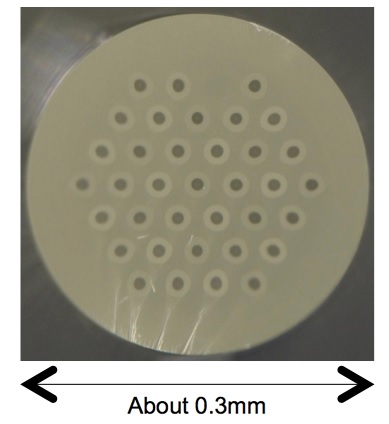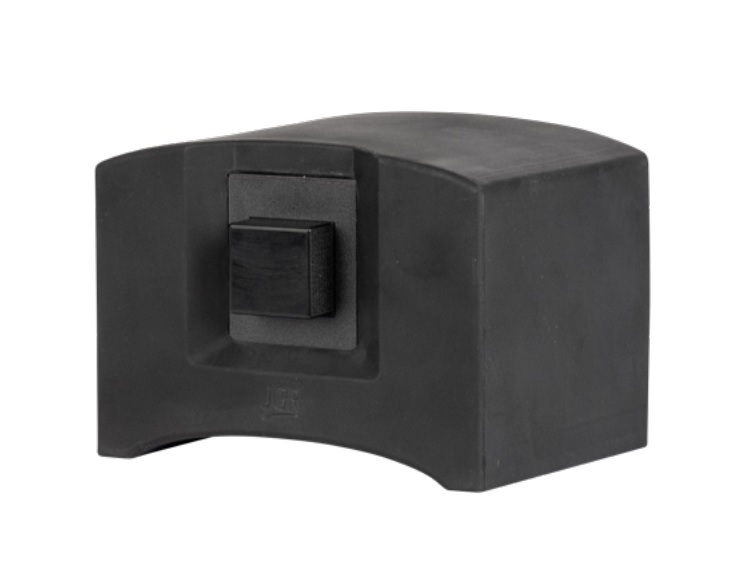April 24, 2015
NICT, together with Sumitomo Electric Industries, Ltd., Yokohama National University, and Optoquest Co. Ltd., has developed a new type of optical fiber having 36 cores, the world's highest number, all employing multimode propagation, demonstrating the first successful experiment of sending and receiving optical signals.
Research is going on worldwide in the field of multicore fibers or multimode fiber transmission as a next-generation technology for increasing the transmission capacity per optical fiber. In the research reported here, the researchers have adopted three modes for all cores, realizing 36 × 3 = 108 spatial channels per single optical fiber. The success of this experiment opens up the possibility of transmission at 10 petabits per second with a single optical fiber.
In order to deal with ever-increasing communication traffic, research is active throughout the world in the field of new types of optical fibers that go beyond the limits of existing optical fibers.
The main new types of optical fibers being investigated are multicore fibers in which multiple paths (cores) are provided, and multimode fibers whose core diameter is increased so that a single core supports multiple propagation modes. Furthermore, research is also being conducted in the field of devices for connecting with single-core, single-mode fibers currently being used for optical communications (hereinafter referred to as "existing optical fibers") since they play an important role in introducing these new types of optical fibers into practical use.
If the manufacturing technologies and connection evaluations of the two types of new optical fibers could be combined to adopt multimode propagation in each core of a multicore fiber, the number of spatial channels for optical signals would considerably increase, resulting in a drastic increase in the communication capacity.
There are problems, however, such as the problem that interference between optical signals leaking from cores increases when the core diameter is increased to adopt multimode propagation, and the problem that the methods of connection with existing optical fibers are so complex that complicated technology is required. Thus, the technology has realized no more than 12-core, 3-mode optical fibers.
In the research reported here, NICT successfully demonstrated an experiment in which optical signals in the communication wavelength band were sent and received through 108 (36 cores × 3 modes) spatial channels using a new type of optical fiber in which all 36 cores adopt multimode propagation and an existing optical fiber connected via a spatial coupling device.
In this experiment, a "36-core multimode fiber" was jointly designed by YNU and Sumitomo Electric and was manufactured by Sumitomo Electric. The spatial coupling device for connecting with the existing optical fiber was designed by NICT and Optoquest and was manufactured by Optoquest.
The maximum number of cores in a multicore fiber previously announced by NICT was 19 for a single mode, and this number has been considered as the limit. In the research reported here, we realized 36 cores, which far exceed the previous 19 cores, and also successfully demonstrated multimode propagation.
As for the spatial coupling device, a function of multiplexing the waves of optical signals in different propagation modes was added to a device that had been developed for multicore single-mode fibers, which allowed us to support both multiple cores and multiple modes with a single device.
Using state-of-the-art optical modulation and demodulation technologies and digital signal processing technologies for all 108 spatial channels in the experiment opens up the possibility of transmission with an ultra-large capacity on the order of 10 petabits per second with a single optical fiber. Thus, we expect that large-capacity network service will be realized less expensively in the future.
At the Optical Fiber Communication Conference (OFC 2015, March 22 (Sun) to 26 (Thu)) held in Los Angeles, USA, one of the biggest international conferences related to optical fiber communication, the results of the experiment were highly evaluated and were adopted as a post-deadline article (the best hot-topic article).
With the aim of introducing multicore and multimode fiber transmission technology into practical use, we will actively cooperate with communication carriers and manufacturers to engage in research and development of technologies for further increasing the capacity of optical communications.
Newly developed optical fiber, coupling device, and results of transmission experiment
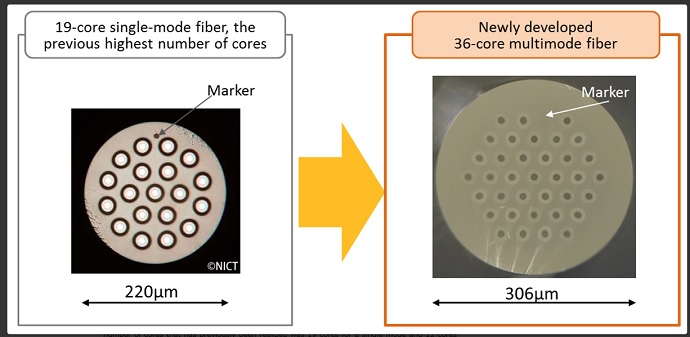
Figure 1: The newly developed 36-core multimode fiber
To introduce the new type of optical fiber into practical use, it is necessary to thoroughly investigate various technologies, such as the ease of manufacturing, the mechanical strength, and the inspection method, as well as communication performance. In order to drastically increase the transmission capacity, it is important to increase the number of spatial channels. The number of cores that has previously been realized was 19 cores for a single mode and 12 cores for three modes.
In the research being reported here, in order to go beyond the limits of fiber manufacturing ability to expand the technical possibilities, as shown in Fig. 1, the researchers fabricated a 3-mode 36-core fiber and experimentally demonstrated that all 108 spatial channels could be used as independent and separate communication channels. The length of the fiber used for the transmission experiment was 5 km.
Issues to be addressed in the future include the uniformity and shape of individual cores, mode control, and reducing signal interference.
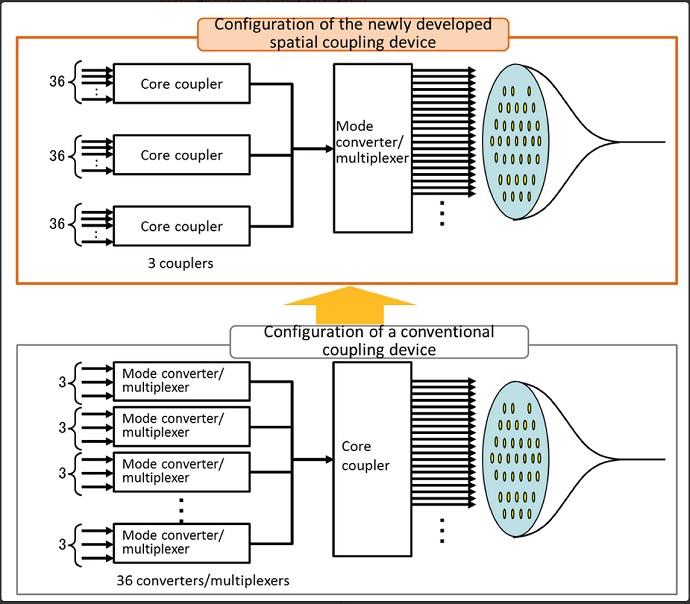
Figure 2: The configuration of the newly developed spatial coupling device
When optical signals propagate in an optical fiber, they advance in various vibration modes while undergoing repeated total reflection at the core-clad interface. The variety of vibration modes translates to propagation modes.
In single-mode fibers that are being used in practice, the core diameter is made smaller than a certain value so that only one mode propagates. Meanwhile, in order to utilize multiple modes for optical communication, it is necessary to multiplex different modes. For this purpose, a mode converter is used. In order to support multicore multimode fibers, however, the same number of mode converters as the number of cores is required. This increases the size and complexity of the device.
In the demonstration experiment being reported, the configuration was reconsidered so that a single optical system sufficed for the mode conversion and multiplexing for all the cores (see Fig. 2). This enabled a considerable reduction in the number of parts.
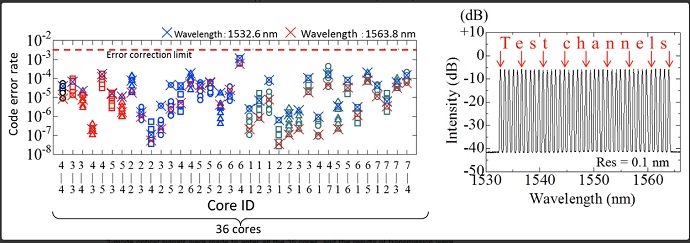
Figure 3: Left: Results (code error rates) transmission of individual cores Right: Wavelengths used in the experiment
In order to confirm the applicability to spatial channels and large-capacity transmission, 3-mode optical signals were made to enter all the 36 cores, and the results of transmission were verified, giving good results.
As shown on the left in Fig. 3, IDs, such as 4-4 and 3-3, were assigned to the individual 36 cores, and the signal quality at each of the cores was measured in terms of the code error rate. The red dotted line labeled as the error correction limit represents the boundary for adequate quality when it is assumed that error correction via digital signal processing was also used. For each core, the measurement results with nine wavelengths are shown, and the results for the minimum wavelength (1532.6 nm) and the maximum wavelength (1563.8 nm) in the measurement are indicated with cross signs as representative values.
On the other hand, the right in Fig. 3 is the spectrum obtained when test signals with 40 wavelengths in the wavelength band currently being used for optical communications were made to enter the fiber. In the figure, the red arrows indicate the nine wavelength channels chosen for error rate measurement.
Furthermore, in order to confirm the possibility of increasing the capacity by also using wavelength multiplexing technology, optical signals with multiple wavelengths were made to enter the fiber simultaneously. Since the emphasis was placed on the evaluation of the fiber characteristics in this verification experiment, experiments for considerably increasing the transmission capacity are planned in the future.
Note that, since the transmission capacity achieved with a single mode and a single core was about 100 terabits per second, a simple calculation shows the possibility of exceeding 10 petabits per second by using all 108 spatial channels. Since the world's previous record in transmission experiments using multicore fibers was about 1 petabit using 12-core or 14-core fibers, the achievement of this research has increased the possibility of advances in the future optical fiber communications by a factor of 10 or more.
Glossary
New types of optical fiber
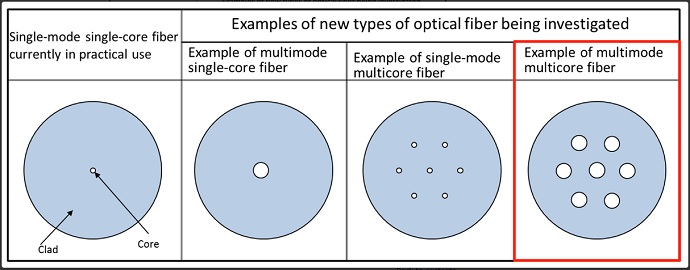
New types of optical fiber
Spatial channels
Multiplexed transmission refers to multiplexing multiple optical signals for transmission and then demultiplexing the received optical signals in order to increase the transmission capacity of a single optical fiber. The multiplexed optical signals are considered as mutually independent communication channels. For example, in wavelength multiplexing technology, in which laser wavelengths (colors) are used for multiplexing, each channel is called a wavelength channel. A spatial channel refers to an individual space (core or mode) that allows the transmission of an optical signal independently. The individual cores of a multicore fiber or the individual modes of a multimode fiber constitute separate spatial channels. In the case of a multimode multicore fiber, the number of spatial channels is multiplication of the number of cores and the number of modes.
Petabits
1 petabits (Pbits) is 1 quadrillion bits, 1 terabits (Tbits) is 1 trillion bits, 1 gigabits (Gbits) is 1 billion bits, and 1 megabits (Mbits) is 1 million bits.
The transmission rate of an ordinary household optical fiber service (FTTH) is about 2 gigabits per second at most, and 1 petabits is about five hundred thousand times greater than that rate.
Spatial coupling device
In order to utilize a multicore fiber or a multimode fiber in optical communications, the connection with single-mode single-core fibers that are currently in actual use is important. Among various types of connection that have been proposed, a device that optically connects optical fibers of different types with each other via a lens, a prism, etc. by using a laser beam that propagates through free space is called a spatial coupling device. There are other types of connection, other than spatial coupling, for example, employing an optical waveguide, such as a fiber bundle, a 3D waveguide, or a photonic lantern.

